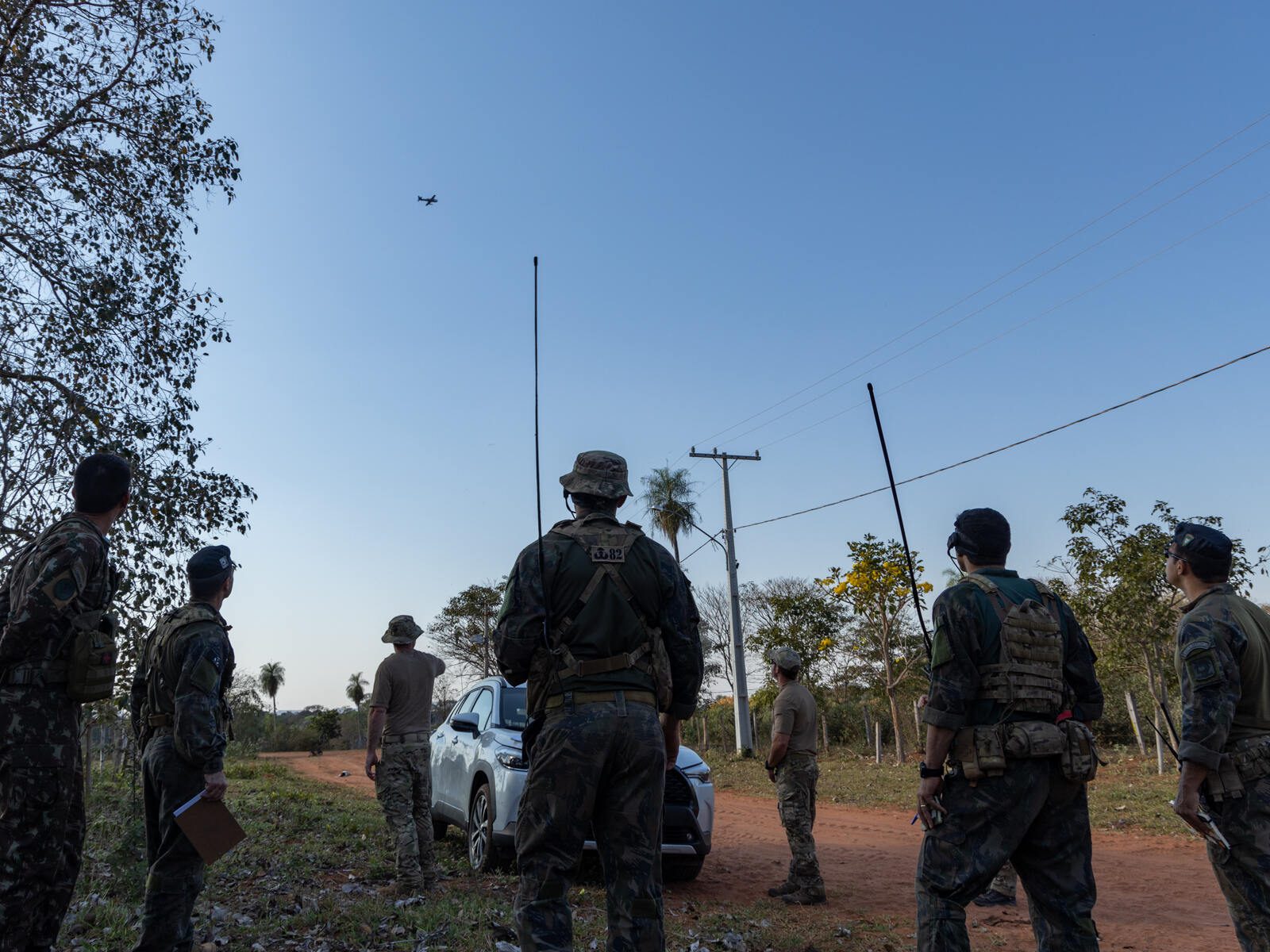In Exercise Tápio, military personnel were trained to play a crucial role in the success of operations
Air Force Agency, by Lieutenant Eniele Santos
Picture the scene: two members of the Advanced Air Guides (AAG) team working in complete harmony. While one of them drives the aircraft, the other is on the ground, coordinating tactical strategies and advising the troops as necessary. This is the mission of the Advanced Air Guide teams of the Brazilian Navy (MB), the Brazilian Army (EB) and the Brazilian Air Force (FAB).
Responsible for the effective use of aerial firepower, these military personnel work on a wide range of Close Air Support and Advanced Air Guidance missions, as well as operational maintenance and training in the area. The aim is to promote interoperability between the Brazilian Armed Forces and those of partner countries.
According to Infantry Captain José Ivan Pedroza Bezerra Ribeiro, Advanced Air Guidance is responsible for conducting, from the ground, attacks by friendly aircraft against enemy forces, and is used in conjunction with surface forces so that it can maximize aerial firepower and avoid collateral damage.

“For the mission to end successfully, the military must be trained in realistic scenarios. In this way, they will hone their skills in describing targets using radio communication and their knowledge of the parameters for using aircraft and weapons so that air strikes are more efficient,” explained Captain Pedroza.
In this edition of Exercise Tápio, the training involves 30 military personnel, including Officers and Graduates from the Brazilian Armed Forces and the New York State Air National Guard (NYANG), being conducted by the FAB, through the Aerial Rescue Squadron (EAS) and the Third Squadron of the Third Aviation Group (3º/3º GAV) – Flecha Squadron, both based at Campo Grande Air Base (BACG).
In this way, throughout the training, the soldiers work together to standardize the Tactics, Techniques and Procedures (TTPs) of the three forces, further increasing the efficiency of operating together.


Missions carried out
The military personnel qualified for activities of this nature work on various types of missions, whether in Special Operations or on behalf of conventional Army units, the Marine Corps or the Navy. “Whenever air power interacts with MB and EB surface forces, these soldiers can be used to direct and coordinate air attacks on the ground,” explained the officer.
One of the activities was carried out with the aim of training the soldiers in night operations that require the use of Night Vision Goggles. “In addition to the radio, the GAA uses infrared markers to mark targets or strobe lights to mark friendly positions,” said the Captain.
Aircraft involved

During Operation Tápio, the military control attacks carried out by A-29 Super Tucano and A1-M aircraft. Thus, in the event of a conflict, they act by identifying targets and guiding attacks from the ground, with a view to the success of the missions.
Photos: Sergeant Müller Marin/ CECOMSAER – Video: Sergeant André Souza/ CECOMSAER
